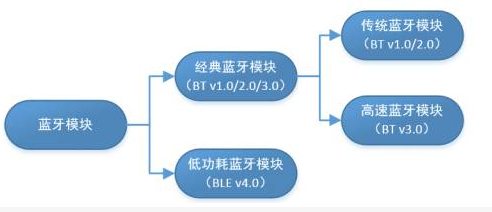Bluetooth is a short-range wireless communication technology that can complete data exchange between fixed devices and mobile devices. Generally, BR/EDR Bluetooth before Bluetooth 3.0 is called traditional Bluetooth, while Bluetooth BLE under the Bluetooth 4.0 standard is called Bluetooth Low Energy (BLE, BluetoothLow Energy).
Bluetooth BLE is a personal area network technology designed and sold by the Bluetooth Technology Alliance. It is designed to be used in new applications in the fields of health care, sports and fitness, beacons, security, home entertainment and other fields. Compared with classic Bluetooth, Bluetooth BLE aims to maintain an equal communication range while significantly reducing power consumption and costs.
Many people’s knowledge of Bluetooth is still limited to mobile phones. In fact, the use of Bluetooth now goes far beyond that. In the past few years, the growth of Bluetooth has reached 80%. Of course, the emergence of Bluetooth BLE also plays a key role. I believe that Bluetooth will create an interactive IoT world in the future.
Differences between Bluetooth BT and BLE
Classic Bluetooth module (BT):
Generally refers to modules that support Bluetooth protocols below 4.0, and are generally used for transmission of relatively large amounts of data.
Classic Bluetooth modules can be further subdivided into: traditional Bluetooth modules and high-speed Bluetooth modules. The traditional Bluetooth module was launched in 2004. The main representative is the module that supports the Bluetooth 2.1 protocol, which was widely supported during the era of the explosion of smartphones.
The high-speed Bluetooth module was launched in 2009, with the speed increased to about 24Mbps, which is eight times that of the traditional Bluetooth module.

Bluetooth low energy module (BLE):
Bluetooth low energy technology uses a variable connection time distance, which can be set from a few milliseconds to a few seconds depending on the specific application. In addition, because BLE technology uses a very fast connection method, it can be in a “non-connected” state (saving energy). At this time, both ends of the link can only know each other, and can open the link when necessary, and then wait for the shortest possible time. The link is closed for a period of time.
Bluetooth BT/BLE is only a classification method of Bluetooth modules. In fact, there are many classifications of Bluetooth modules. For example:
According to the purpose, Bluetooth modules include data Bluetooth modules, voice Bluetooth modules, serial Bluetooth modules and vehicle Bluetooth modules; according to chip design, Bluetooth modules include flash version and ROM version. The former is usually BGA package (seeking grid array package) with external flash, while the latter is usually LCC package (surface mount package) with external EEPROM.
Structure and equipment of BLE protocol stack
1. The agreement consists of two parts: Controller and Host
2. Profiles and usage are always based on GAP and GATT
3. In the single-chip plan, the Controller, Host, profiles, and usage layer are all on the same chip.
4. In network controller mode, Host and Controller run together, but the applications and profiles are on another device, such as PC or other microcontrollers, and you can ultimately rely on UART and USB to perform related operations.
5. In dual-chip mode, the Controller runs on one controller, and the application layer, profiles and Host run on another controller.
Main application areas of BLE Bluetooth module
1. Mobile expansion equipment
2. Car electronic equipment
3. Health and medical supplies: heartbeat belt, blood pressure monitor, etc.
4. Positioning use: indoor positioning, underground positioning, etc.
5. Close data collection: wireless meter reading, wireless telemetry, etc.
6. Data transmission: smart home indoor control, Bluetooth dimming, printer, etc.
The above is an introduction to Bluetooth BLE. Keywords: 4G RTU
(The article material comes from the Internet, if there is any infringement, please contact us and delete it)


